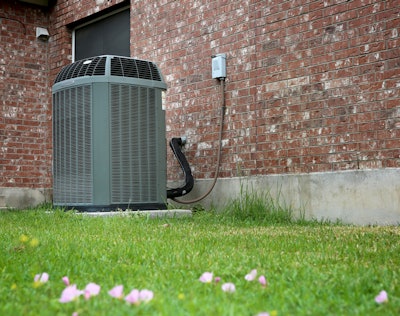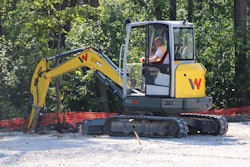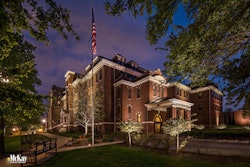
When these unsightly eyesores present themselves in your customer’s landscape, it’s important to find beautiful and creative ways to make these items disappear without actually having to remove them.
If you find yourself facing eyesores in your customer’s yard, take a look at a few creative solutions that will keep the space attractive and allow these items to fade effortlessly into the background.
Keep in mind
Before deciding on a plan of action for hiding these eyesores, be sure that whatever design idea you go with does not hinder the functionality of the item or cause a safety issue.
When dealing with AC units, propane, septic tanks or well heads, it’s vital that whatever method you use to hide them won’t restrict access to them, as these will typically require routine maintenance.
Be sure not to block any vents or circulation, as AC units will require enough space for free circulation. AC units will also send out hot vapors, which could prove challenging to plants growing close by.
Also, keep the space you’re working with in mind and don’t opt for shrubs that will be too tall or take up too much surrounding space. If the knee-jerk reaction is to cover the item with shrubs that are extremely tall, take a step back and see how it will balance in the space. Instead, utilize shrubs that are just tall enough to cover the structure without adding too much unnecessary height.
Fences, natural barriers and misdirection
When it doubt, adding in attractive fences and lattice work can help take the focus away from unsightly structures in the landscape, while still allowing them the space to be functional.
If your customer does want to take the route of fencing in an AC unit or garbage can, be sure that the fence either has one side open or a gate to allow for easy access when maintenance is needed.
If your customer, instead, wants to go for a more natural look, consider adding in natural screens to hide these eyesores. For a more nature-inspired look, consider using materials like bamboo, reeds or willow to create the screen, and add in plants around the bottom and growing up the screen to let it naturally become part of the landscape.
Another clever way to disguise eyesores that may be attached to the home can be to cover them with vines, but always be cautious when doing this, as they have a tendency to grow into surrounding areas.
Adding in distractions around the space, such as a bubbling fountain, is another way to help keep the focus away from unpleasant sights. Typically speaking, water features will draw a lot of focus, as well as provide pleasant and soothing sounds in the landscape.
Berms and potted plants
One of the best methods to hide eyesores in the landscape is to create a dirt berm, which can also help with creating height and depth to the yard and create better drainage.
Berms are mounded hills of dirt constructed for blocking out unwanted or unsightly views, creating a subtle sense of privacy, directing or redirecting drainage and foot traffic, emphasizing a particular focal point or adding raised elements to the garden.
When constructing a berm, you typically will use some sort of fill material like plant debris, sand, soil or rubble, and this material can be used to make the bulk of it. As long as the material is capable of retaining stability without deteriorating, it can be used as the fill material.
While it’s true that you can always hide a few of the smaller eyesores with plants in surrounding or neighboring beds, it’s wise to keep plants far enough away so your customers are still able to easily access the utilities. With this in mind, try keeping plants at least four feet away from these structures when planting.
Or, talk to your customers about the possibility of, instead, incorporating potted plants around. This would still give your customers the beautiful plants they crave, while also allowing them the ability to move the pots when maintenance is needed.
When working around AC units or gas meters, it’s typically a better call to opt for the potted plants, as planted roots have the potential to grow into the service lines.











